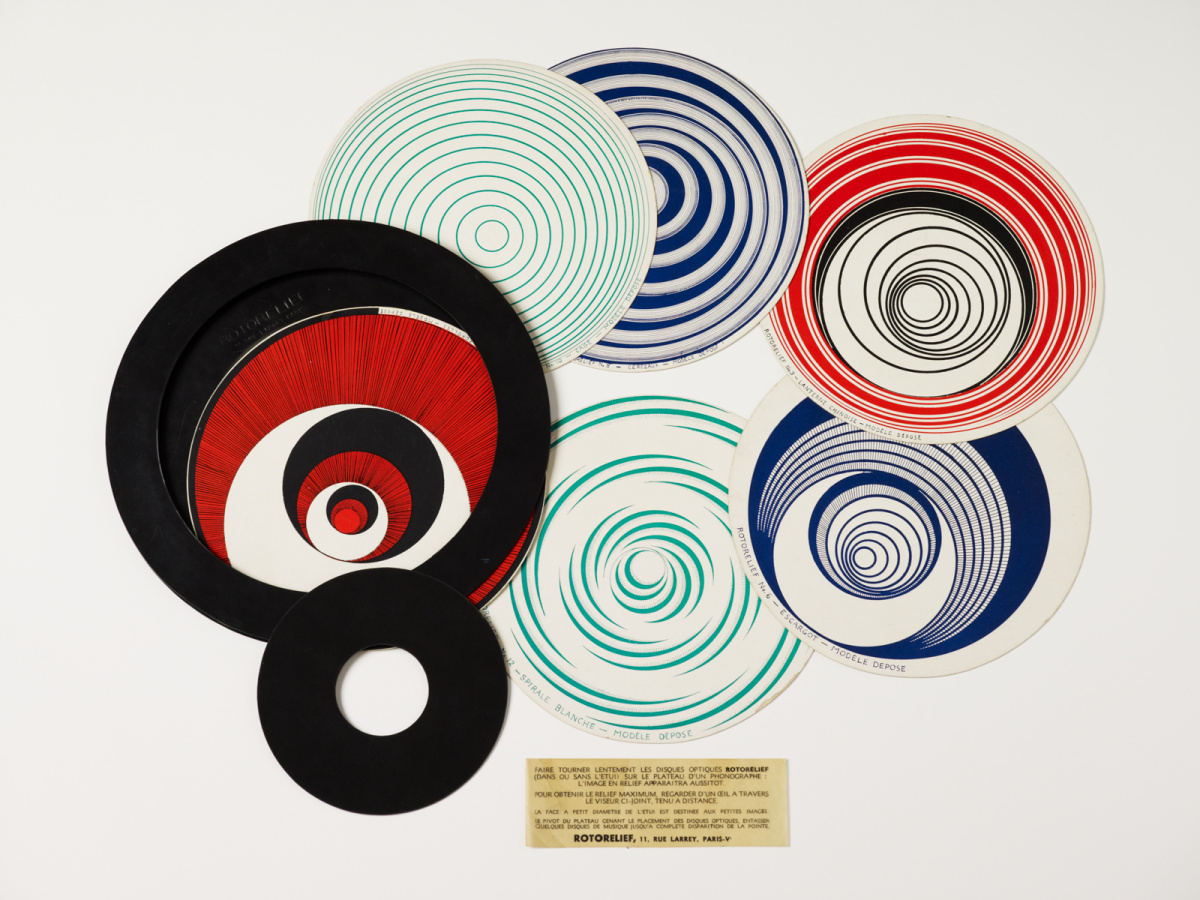Set of six offset lithographs on cardboard in plastic case, instruction manual on tin foil. To be viewed as they rotate at 33 1/3 revolutions per minute.
Diameter: 20 cm each, Series 133
Kunstmuseum Liechtenstein, Vaduz
Marcel Duchamp's Rotoreliefs (1935) are part of a series of optical, kinetic experiments and exemplify his exploration of mechanical processes and optical effects. Although his first attempt to sell the pieces at the Concours Lépine, a fair for inventors in Paris, in 1935 was not particularly successful (he sold 3 of 500 sets), it embodies the same idea expressed by Duchamp's boxes: of being able to take home one's own set of reproductions.
Each disc is printed on both sides, each side has its own design and title. When placed on a turntable, the rotation gives rise to an "image in relief": a moving, three-dimensional object or spiral structure that creates a hypnotic illusion. Describing the disc designs, artist Bethan Huws, whose work is informed by a profound exploration of Duchamp, writes:
"With the exception of Lamp, right at the beginning, the verso designs are abstract. Corolla means all the petals of the flower as a group. Hoop (1) a circular-shaped figure or ring (2) as in gymnastics. English idiom: to run rings around someone, meaning to outwit. Bohemian Glass: Bohemian glass or crystal is one of the finest in the world and is produced in regions of Bohemia. Artists and students have, since George Sand (1804–76), also been known as Bohemians."
Early versions of the Rotoreliefs (in combination with Duchamp's typical puns) already featured in 1925 in the film Anémic Cinéma, that Duchamp published under his alter ego Rrose Sélavy in collaboration with Man Ray and Marc Allegrét. The Rotoreliefs also appear in a dream sequence directed by Duchamp in Hans Richter's film Dreams That Money Can Buy (1947). The sequence is accompanied by 03:22 Min., a composition by John Cage. Accordingly, the Rotoreliefs are meant to be viewed at 33 1 / 3 revolutions per minute.
Leslie Ospelt
"If you look at the numbered system on the discs, there's something odd right at the beginning. We go from 1, on the front, to 4, on the back, then 2, 3, then we jump to 5, which doesn't make sense. But if we change strategies and add the numbers up instead, the total comes to 78. If you now reverse the numbers, we get 87: the year of Duchamp's birth (1887)."
Bethan Huws
From the booklet of the exhibition Artist's Choice: Bethan Huws (2024).
